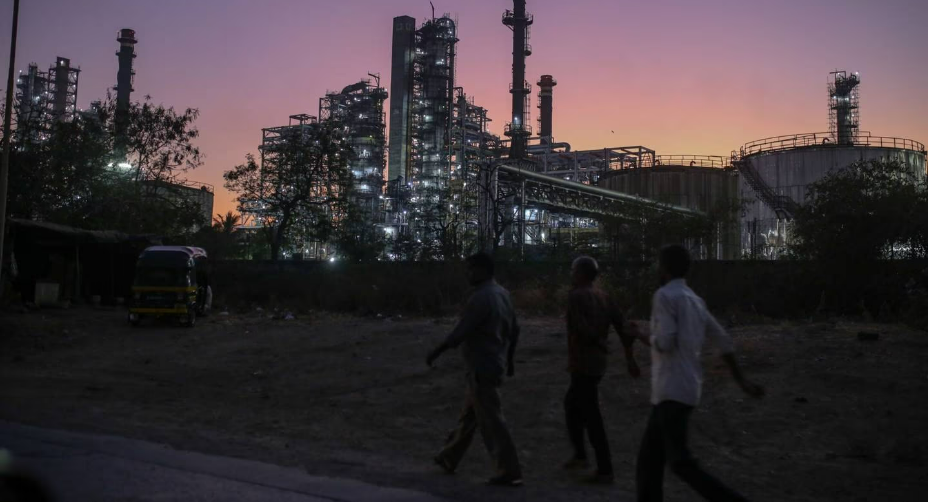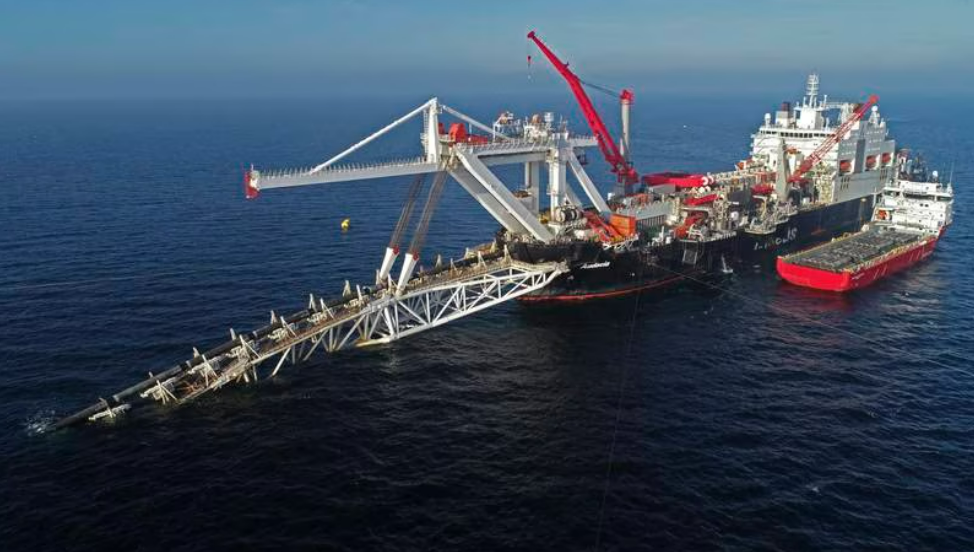A ship in the Baltic Sea on the natural gas pipeline Nord Stream 2 from Russia to Germany. An EU and G7 price cap on Russian oil has aimed to reduce Moscow’s energy revenue over the Ukraine war. AP
Russian seaborne crude exports rebounded in January after falling sharply last month as an EU embargo and a G7 price cap came into effect, according to Rystad Energy estimates.
Russian oil exports by sea rose to a two-month high of 3.2 million barrels per day in the second week of January, after dropping to an average of 2.6 million bpd in December, the Norway-based consultancy said.
“The main conclusion that can already be formulated … is that the effect of sanctions on the volume of Russian crude oil exports has not been as devastating as some industry players predicted,” Rystad Energy said in a report.
India and mainland China remain the key buyers of Russian crude, the report said.
While India, the world’s third-largest oil importing country, increased its Russian oil imports to 1.2 million bpd in December compared with 950,000 bpd in the previous month, "it looks like the January data will be even higher as a significant portion of the unknown flows are likely to end up in the country", Rystad said.

Pedestrians walk past an oil refinery, operated by Bharat Petroleum in Mumbai, India. The country remains of the key buyers of Russian crude.
On December 5, the EU and the G7 agreed to introduce a $60 a barrel ceiling on Russian crude imports with an adjustment mechanism to keep the cap at 5 per cent below the market price in retaliation for Moscow's invasion of Ukraine in February.
The ceiling aims to reduce Moscow’s oil and gas revenue, while maintaining adequate supplies of crude on the global energy market.
Despite Western sanctions, Russia — Europe’s top gas supplier and the world’s second-largest crude exporter — has continued selling discounted barrels to countries such as India and China.
“The resilience shown by Russian seaborne exports is a result of the build-up of a fleet of tankers by Russia,” said Rystad Energy.
However, the share of tankers operating with Russian oil that rely on “Western services and insurance” has dropped to 30 per cent after the latest sanctions took effect, compared with 60 per cent in the summer, the report said, citing latest data.
Russian crude exports fell by 200,000 bpd last month, compared with November, according to the International Energy Agency (IEA).
At the same time, Russian diesel exports surged to a multiyear high of 1.2 million bpd, of which 720,000 bpd was destined for the EU, the agency said.
The price cap has had a “significant” effect on oil prices from Russia’s western ports — called the Urals — which currently accounts for about 45 per cent of all Russian exports, said Rystad Energy.
Urals oil from western ports currently sells at a discount of about $40 per barrel to the Brent price, in the range of $40 to $45 per barrel.
Last week, global oil prices gained for the second straight week on prospects of a fuel demand rebound in China, the world’s top crude importer.
Brent, the benchmark for two thirds of the world’s oil, settled 1.71 per cent higher at $87.63 a barrel on Friday. West Texas Intermediate, the gauge that tracks US crude, was up 1.28 per cent at $81.64 a barrel.
Global oil demand will surge to a “record” this year following the end of coronavirus restrictions in China, according to the IEA.
Oil demand will rise by 1.9 million barrels a day to 101.7 million bpd in 2023, said the IEA, which had previously estimated a growth of 1.7 million bpd.
Nearly half the gain in crude demand will come from China, which has reopened its borders for the first time in three years, triggering a sharp rise in airline bookings.
“After a rocky start to the new year 2023, crude oil prices witnessed consistent gains during the second week followed by a volatile third week,” said Junaid Ansari, head of investment strategy and research at Kamco Invest.
“The gains … came after several data points indicated a slowdown in US inflation rates in the near-term as well as higher demand from China,” said Mr Ansari.
“A soft landing is also eyed as economies try to dodge a full-blown recession during the year.”

